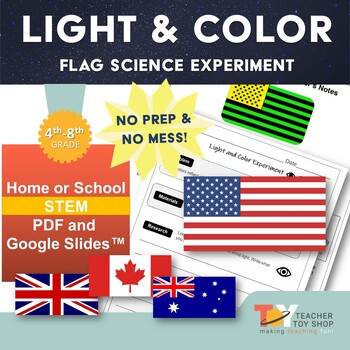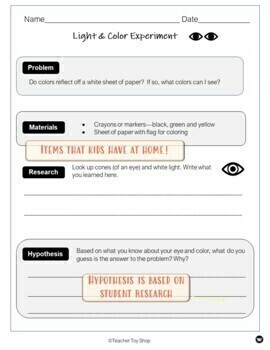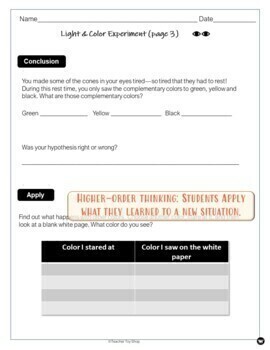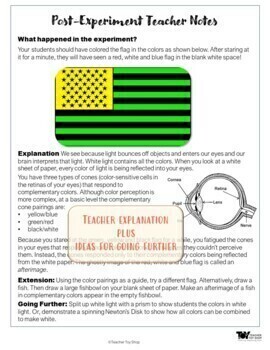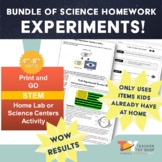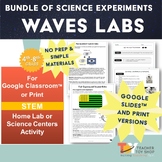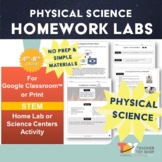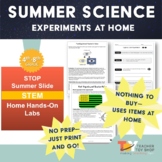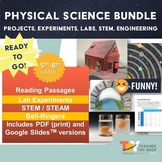Light Energy and Waves Science Activity - Colors of the Flag
- PDF
- Google Apps™
- Easel Activity

What educators are saying
Also included in
- These are SIMPLE and fun lab experiments that can be done at home OR school.Included are: teacher notes, a reproducible lab sheet for your students, and post-experiment teacher notes which explain (with a photo) what students will have observed, along with a kid-friendly explanation, real-world applPrice $16.99Original Price $33.24Save $16.25
- ALL of Teacher Toy Shop's Science Homework Experiments (both digital and PDF print) in one product!______________________________________________________________* Visit my store and click on the green star to be the first to know about new products, sales and freebies.** Please remember to rate thisPrice $34.99Original Price $57.48Save $22.49
- Need hands-on activities for light and sound waves? These exciting lab experiments for home or school teach about waves, light energy, sound energy, the properties of waves, how waves travel and how we see and hear. These waves activities only require materials that students and teachers already havPrice $14.99Original Price $21.98Save $6.99
- Need a way for students to do SAFE science experiments at home? These hands-on physical science labs are incredibly easy to implement at home or school. Students get wildly excited when the unexpected happens in these experiments. Parents enjoy seeing kids doing an actual experiment at home and watcPrice $34.99Original Price $39.47Save $4.48
- Summer science experiments are a great way to help with the summer slide. Students can do these fun hands-on summer science activities to review or get ahead in science. These are great for home or science summer school.The hands-on experiments are incredibly easy to implement. Parents enjoy seeingPrice $34.99Original Price $47.47Save $12.48
- All of Teacher Toy Shop's Life Science resources in one place! Some biology topics included: cells, ecosystems, human body systems and organs, flowers, reproduction, human eye, and more. Includes NGSS aligned lessons, experiments using the Scientific Method, and more.Purchase this bundle for a low-pPrice $49.99Original Price $80.66Save $30.67
- All of Teacher Toy Shop's Physical Science resources in one place! These are some of the many topics included: waves, forces and motion, matter and energy, solar system, electricity and magnetism, sound, heat transfer, STEM, scale models, graphing, electricity, states of matter, density, propertiesPrice $118.61Original Price $148.61Save $30.00
Description
Embark on an exhilarating exploration of light energy and waves with this Light Energy and Waves Science Activity featuring flags of various countries. This hands-on lab offers students a visual and experiential understanding of the composition of white light, showcasing the astounding results when a red, white, and blue flag is observed on a blank white sheet of paper. Engage students in a meaningful exploration of color perception, white light, the entrance of light waves into the eye's pupil, and the fascinating separation of white light into the spectrum through prisms.
Designed for both biology and physical science contexts, this lab provides a comprehensive experience that extends beyond theoretical concepts. Students can effortlessly engage in this experiment at home or in the classroom, with options for print-and-go or assignments through Google Classroom™. The resource includes teacher notes, reproducible lab sheets and coloring sheets, Google Slides™ versions of student worksheets, post-experiment teacher notes with explanations, and extension activities. The simplicity of the instructions, requiring only three crayons, makes it an easy-to-implement hands-on lab for teachers.
Beyond the science lesson, this activity becomes a patriotic endeavor, fitting for various holidays such as Veteran's Day, President's Day, Memorial Day, Independence Day (July 4th), September 11, and more. If you are not in the United States, there are also versions for Canada, UK, and Australia included.
With applications for distance learning, remote teaching, in-class laboratories, science centers, or science stations, this experiment seamlessly integrates into diverse educational settings, making science exploration both accessible and exciting for students.
► What's Included?
- Teacher notes
- A reproducible lab sheet for your students
- A reproducible coloring sheet for doing the experiment
- Google Slides™ versions of all student worksheets which you can assign with Google Classroom™
- Post-experiment teacher notes which explain what students will have observed, along with a kid-friendly explanation, and extension activities
- Option to do this as a whole-class demonstration
- Versions for flags of the USA, Canada, UK, and Australia
You Might Also Like...
- Cartesian Diver Buoyancy and Density STEM Experiment
- Heat Transfer and Heat Energy Activity
- Light Energy and Parts of the Eye Science Activity
⚠️ BUNDLE & SAVE! ⚠️ Want to get all of my Science Homework Experiments at a steep discount? Click here to view my Science Homework Experiments Bundle!
✪ Don't forget to follow Teacher Toy Shop to be the first to know about new products, sales and freebies!

